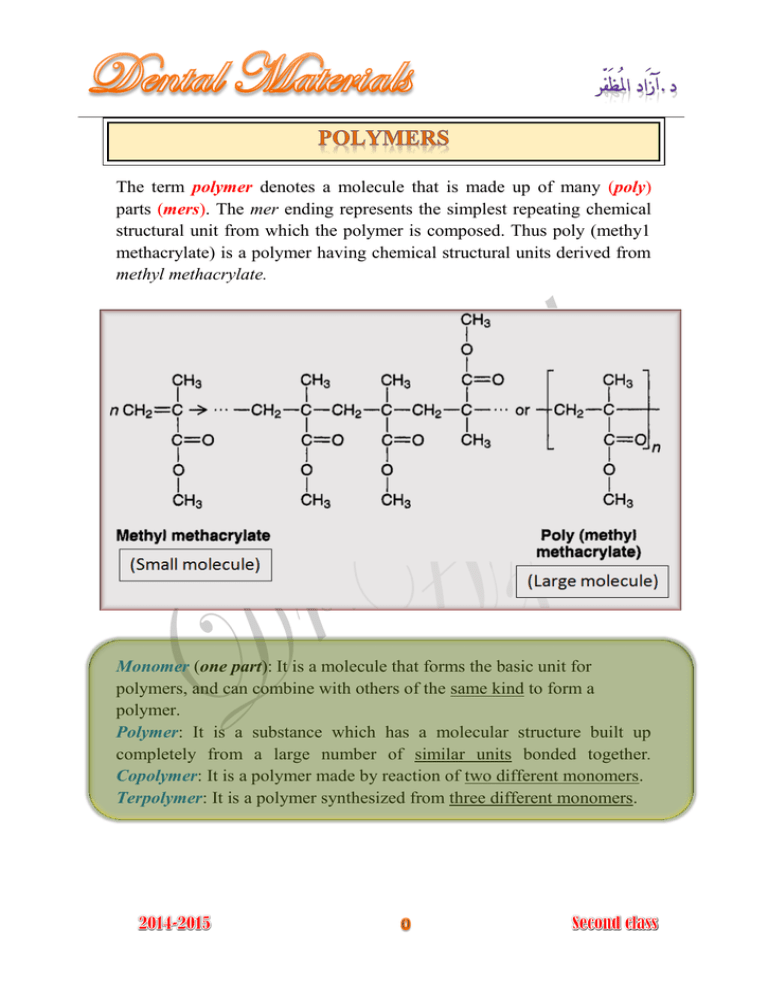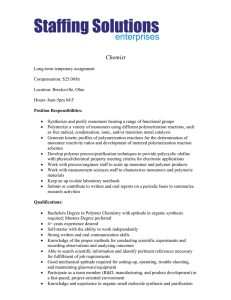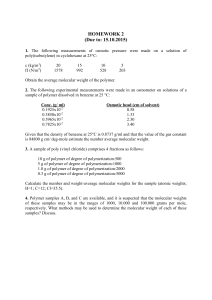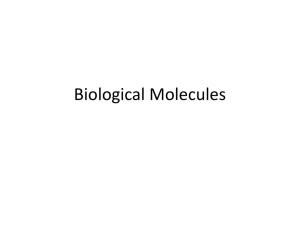Document 12822802
advertisement

The term polymer denotes a molecule that is made up of many (poly) parts (mers). The mer ending represents the simplest repeating chemical structural unit from which the polymer is composed. Thus poly (methy1 methacrylate) is a polymer having chemical structural units derived from methyl methacrylate. Monomer (one part): It is a molecule that forms the basic unit for polymers, and can combine with others of the same kind to form a polymer. Polymer: It is a substance which has a molecular structure built up completely from a large number of similar units bonded together. Copolymer: It is a polymer made by reaction of two different monomers. Terpolymer: It is a polymer synthesized from three different monomers. The molecular weight of the polymer molecule equals the molecular weight of the various mers multiplied by the number of the mers. The higher the molecular weight of the polymer, the higher the degree of polymerization. The term is the process by which the monomers convert into polymers, but the is defined as the total number of mers in a polymer molecule. Figure (3-3): Linear , branched, and cross-linked homopolymers and copolymers Denture base, special tray, record base. Artificial teeth. Obturators for cleft palate. Composite tooth restoration. Orthodontic space maintainer. Crown and bridge. Endodontic filling. Impressions. Maxillofacial prosthesis. Dies. Endodontic filling material. Splints and stents. Athletic mouth protectors. Cements. Polymerization reactions fall into two basic types: 1- Addition polymerization. 2- Condensation polymerization. (Free-Radical Polymerization) Most dental resins are polymerized by addition polymerization which simply involves the joining together of monomer molecules to form polymer chain. In this type of reaction, no byproduct is obtained. The reaction takes place in three 1- Initiation stage. 2- Propagation stage. 3- Termination stage. : 1- Activation and initiation stage To start the addition polymerization process a free radicals must be present. (Free radicals are very reactive chemical species that have an unpaired electron). The free radicals are produced by reactive agents called initiators. (Initiators are molecules which contain one relatively weak bond which is able to undergo decomposition to form two reactive species (free radical), the decomposition of bond of initiator need source of energy (activator) such as heat, chemical compound, light, electromagnetic radiation). Initiator is used extensively in dental polymers is (Benzoyl peroxide). Addition polymerization reaction is initiated when the free radical reacts with monomer molecules producing another active free radical species which is capable of further reaction. 2- Propagation stage The initiation stage is followed by the rapid addition of other monomer molecules to the free radical and the shifting of the free electron to the end of the growing chain. 3- Termination stage This propagation reaction continues until the growing free radical is terminated either by: a- Reaction of two growing chains to form one dead chain b- Reaction of growing chains with materials as (hydroquinone, eugenol, impurities, or large amounts of oxygen). A condensation reaction involves two molecules reacting together to form a third, large molecule with production of by-product such as water, halogen, acid, and ammonia. Condensation reaction progresses by the same mechanism of chemical reaction between two or more simple molecules. Factors control the structure and the properties of polymers: 12345- The molecular structure of repeating units including the use of copolymer. Molecular weight or chain length. The degree of chain branching (Linear, network, 3D). The presence of cross-linking agent. Presence of plasticizers or fillers.






